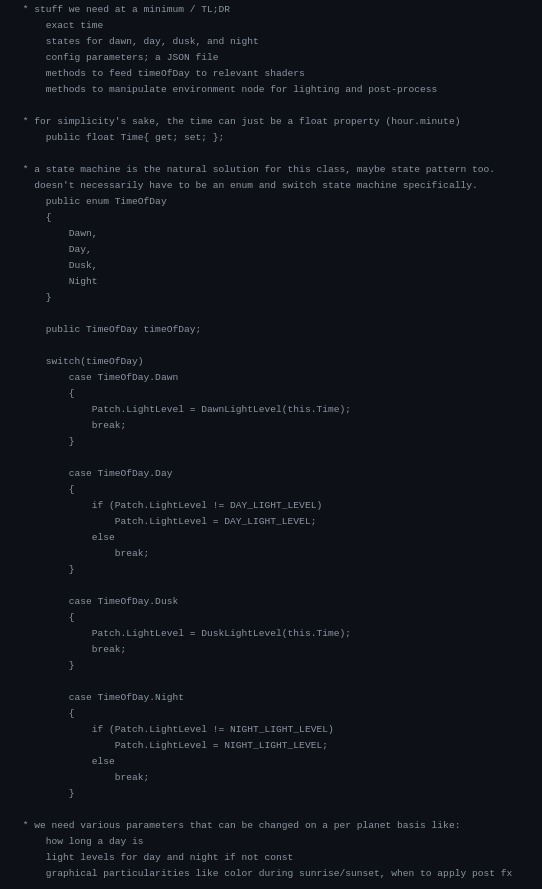I had imagined a more continuous changing of light levels rather than discrete states, but this probably works better actually. Provided there’s a nice animation between them, it should make things clearer for the player.
The obvious question is how long these states should last. A pretty thorny problem and deeply tied to how long it takes to reproduce. I’m imagining a minute or two, but that’s really a very vague guess.
There should be a visual indication of the current time, expressed through lighting of the environment. I experimented with this a while back and found the world light in the Godot scene didn’t seem to affect anything, at least to an easily visible degree. To get the background and cloud planes to change brightness in particular, this PR will require quite a bit of restructuring for various scenes.
One other quick thing to figure out is how this affects Auto-Evo. We don’t want to ignore it, as then we’d have a world full of photosynthesising organisms that keep dying at night. If the intent is to nerf photosynthesis and buff storage, then Auto-Evo needs to take storage into account.
The big and perhaps controversial concept I have in mind is that low light levels should limit the player’s vision. I can see why this might not work, but here’s my proposal:
As light level dims, the player’s vision should restrict to a shrinking circle around them. So cells, chunks, clouds and the background should fade to black (or at least a much darker colour) outside this circle. Chemoreceptors would still work. For consistency, the maximum range for the AI’s detection of other cells could shrink too.
To counteract this shrinking of view, cells can evolve bioluminescence. There would be bioluminescent proteins and a bioluminescent vacuole. With either equipped, the player can press a hotkey to switch on all their lights, which would greatly expand their range of view at the cost of ATP while turned on.
Other cells with bioluminescence would be visible even outside the player’s view circle, for obvious reasons.
Now, would this all make for a fun experience in the game? I don’t know. I’d like to see it in action to find out though.
But one immediate consequence of this is we’d have to think about how this works in patches that are permanently dark. Do cells have restricted vision there too? How would playing with permanently restricted vision affect gameplay? I would guess rather a lot.
EDIT: I should note that not all of this has to be implemented at once. It would be perfectly possible to add everything except the vision restriction and bioluminescence part, then return for those additions later.
